




We are just a few months away from the grand opening of the Applied Science Project, new home of the Department of Physics & Astronomy. Already, you can see the new observatory up top where our weekly star parties will occur. I am so grateful to everyone who helped make this dream come true and cannot wait to see the department all together in the new building. The facility opens for classes this fall, and there are still opportunities for donors to contribute to the interior spaces.
This year’s Spectrum highlights some of the student success efforts, research, and faculty recognition that will continue in our new facility. You’ll get an update on the Telescope Array here in Utah’s west desert and read about a paper that posits the largest sample ever of dwarf galaxies that host an actively feeding black hole. Using data from the Dark Energy
Spectroscopic Instrument, postdoctoral researcher Ragadeepika Pucha led an international team, including co-authors U Professors Kyle Dawson and Yao-Yuan Mao, to assemble the most extensive collection of intermediate-mass black hole candidates to date. You’ll find this story included as well as other news from the observable cosmos.
On the physics side of the department, Eric Montoya’s new research on setting and maintaining electron spin orientation, known as spintronics, complements the celebrated research of Valy Vardeny. Valy has helped transform existing optoelectronic devices into ones that can control electron spin at room temperature, without a ferromagnet or magnetic field.
Bridging astronomy with particle physics is the work being done in the department’s high energy
theory group. Theoretical physicist Pearl Sandick, for example, focuses on topics at the interface of particle physics and cosmology. Inside, you can read more about this group, one of the many research areas in the department. And this just in as of March 7th: Pearl, who has been serving as associate dean of the College of Science, has just been appointed as the new interim dean replacing Peter Trapa. Congratulations!
Our commitment to student success begins from day one. The department currently offers research streams for undergraduates in the Science Research Initiative. ACCESS Scholars is another program for first-year students. Included in this issue is a profile of physics major and ACCESS alum Kate Anderson whose aspiration is to become a NASA astronaut.
Finally, in this magazine you can
read about a few of our esteemed alumni, including Thomas Tang BS’94, founder and president of Apantac LLC, a global leader in design and development of highquality, cost-effective image signal processing equipment.
Your support of our department— whether as donors, friends, or
alumni like Thomas—enables us to fulfill our mission of advancing scientific discovery while preparing the next generation of physicists and astronomers. Thank you for being part of our community and helping ensure student success remains at the center of everything we do.
Warm regards,
Chair Carsten Rott





RAMÓN BARTHELEMY ELECTED APS CHAIR, FORUM ON DIVERSITY AND INCLUSION
TANMOY LASKAR SCIALOG LSST AWARD
ERIC MONTOYA NSF CAREER AWARD
TINO NYAWELO APS FELLOW PRESIDENTIAL SOCIETAL IMPACT SCHOLAR
EMILY SAGESER SEMI-FINALIST, FULBRIGHT STUDENT PROGRAM

Cover: A mosaic of 378 satellite images across 101 Milky Way-like systems surveyed by the Satellite Around Galactic Analogs team. These images were sourced for research led by Yao-Yuan Mao, published by The Astrophysical Journal in Nov. 2024 Credit: Yao-Yuan Mao, with images from the DESI Legacy Surveys Sky Viewer.
Spectrum is the official magazine of the Department of Physics & Astronomy, University of Utah, published in partnership with Marketing & Communications, College of Science. Associate Director of Marketing & Communications: Bianca Lyon
Writer & Editor: David Pace
Designer/Photographer: Todd Anderson
Follow us on social media @uofuphysandastro or @uofuphysastro or UofU.Physics.Astronomy
Prefer only a digital version of Spectrum? Send us an email.
frontdesk@physics.utah.edu
POTTER

THE DARK ENERGY SPECTROSCOPIC INSTRUMENT (DESI) DISCOVERS A TREASURE TROVE OF ACTIVE BLACK HOLES IN DWARF GALAXIES AND REVEALS THAT SURPRISINGLY FEW ARE OF INTERMEDIATE MASS.
Using early data from DESI, a team of scientists, led by University of Utah postdoctoral researcher Ragadeepika Pucha, have compiled the largest sample ever of dwarf galaxies that host an actively feeding black hole, as well as the most extensive collection of intermediate-mass black hole candidates to date. This dual achievement not only expands scientists’ understanding of the black hole population in the universe but also sets the stage for further explorations of the formation of the first black holes to form in the universe and their role in galaxy evolution.
With DESI’s early data, the team was able to obtain an unprecedented dataset that includes the spectra of 410,000 galaxies, including roughly 115,000 dwarf galaxies—small, diffuse galaxies containing thousands to several billions of stars and very little gas. This extensive set would allow Pucha and her team to explore the complex interplay between black hole evolution and dwarf galaxy evolution.
While astrophysicists are fairly confident that all massive galaxies, like our Milky Way, host black holes at their centers, the picture becomes unclear as you move toward the lowmass end of the spectrum. Finding black holes is a challenge on its own, but identifying them in dwarf galaxies is even more difficult due to their small sizes and the limited ability of our current instruments to resolve the regions close to these objects. An actively feeding black hole, however, is easier to spot.
“When a black hole at the center of a galaxy starts feeding, it unleashes a tremendous amount of energy into its surroundings, transforming into what we call an active galactic nucleus,” says Pucha. “This dramatic activity serves as a beacon, allowing us to identify hidden black holes in these small galaxies.”
The study was published in The Astrophysical Journal
DESI is a state-of-the-art instrument that can capture light from 5,000 galaxies simultaneously. It was
constructed, and is operated, with funding from the Department of Energy (DOE) Office of Science. DESI is mounted on the U.S. National Science Foundation (NSF) Nicholas U. Mayall 4-meter Telescope at the NSF Kitt Peak National Observatory, a program of NSF NOIRLab. The program is now in its fourth of five years surveying the sky and is set to observe roughly 40 million galaxies and quasars by the time the project ends.
The DESI project is an international collaboration of more than 900 researchers from over 70 institutions around the world and is managed by DOE’s Lawrence Berkeley National Laboratory.
The team identified an astonishing 2,500 candidate dwarf galaxies hosting an active galactic nucleus (AGN)—the largest sample ever discovered. The significantly higher fraction of dwarf galaxies hosting an AGN (2%) relative to previous studies (about 0.5%) is an exciting result and suggests scientists have been missing a substantial number of low-mass, undiscovered black holes.
In a separate search through the DESI data, the team identified 300 intermediate-mass black hole candidates—the most extensive collection to date. Most black holes by LISA
are either lightweight (less than 100 times the mass of our sun) or supermassive (more than 1 million times the mass of our sun). The black holes in between the two extremes are poorly understood but are theorized to be the relics of the very first black holes formed in the early universe, and the seeds of the supermassive black holes that lie at the center of large galaxies today. Yet they remain elusive, with only around 100-150 intermediate-mass black hole candidates known until now. With the large population discovered by DESI, scientists now have a powerful new dataset to use to study these cosmic enigmas.
“The technological design of DESI was important for this project, particularly its small fiber size, which allowed us to better zoom in on the center of galaxies and identify the subtle signatures of active black holes,” says Stéphanie Juneau, associate astronomer at NSF NOIRLab and coauthor of the paper. “With other fiber spectrographs with larger fibers, more starlight from the galaxy’s outskirts comes in and dilutes the signals we’re searching for. This explains why we
managed to find a higher fraction of active black holes in this work relative to previous efforts.”
Typically, black holes found in dwarf galaxies are expected to be within the intermediate-mass regime. But intriguingly, only 70 of the newly discovered intermediate-mass black hole candidates overlap with dwarf AGN candidates. This adds another layer of excitement to the findings and raises questions about black hole formation and evolution within galaxies.
“For example, is there any relationship between the mechanisms of black hole formation and the types of galaxies they inhabit?” Pucha asks. “Our wealth of new candidates will help us delve deeper into these mysteries, enriching our understanding of black holes and their pivotal role in galaxy evolution.”
Pucha and other U physicists, including Yao-Yuan Mao, assistant professor of
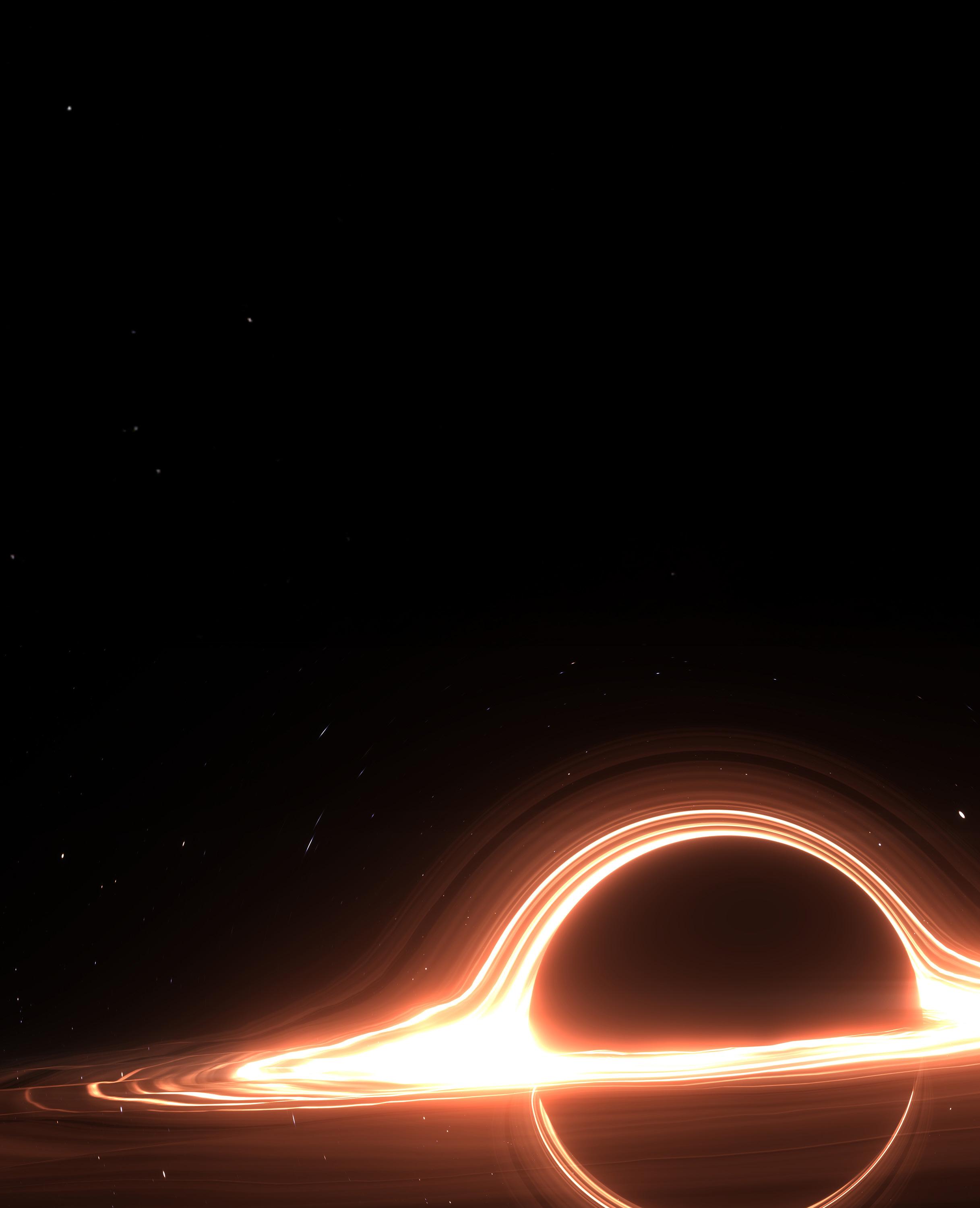
physics and astronomy, are digging deeper into this DESI dataset to estimate the fraction of dwarf galaxies that indeed host a black hole. Their team is one of countless others around the world that will be benefited by this new dataset.
“This is one of the most exciting aspects of modern astronomy. Astronomers understand that not only do large survey datasets enable the curators themselves to do cool science, but it benefits everyone in the astronomy community,” says Mao, who is a co-author of the study.
“By making this dataset publicly available, the astronomy community can explore topics that we would have never thought about before.” <

by LISA POTTER
OUR DATA-DRIVEN WORLD DEMANDS MORE—MORE CAPACITY, MORE EFFICIENCY, MORE COMPUTING POWER.
To meet society’s insatiable need for electronic speed, physicists have been pushing the burgeoning field of spintronics.
Traditional electronics use the charge of electrons to encode, store and transmit information. Spintronic devices utilize both the charge and spin-orientation of electrons. By assigning a value to electron spin (up=0 and down=1), spintronic devices offer ultra-fast, energyefficient platforms.
To develop viable spintronics, physicists must understand the quantum properties within materials. One property, known as spintorque, is crucial for the electrical manipulation of magnetization that’s required for the next generations of storage and processing technologies.
Researchers at the University of Utah and the University of California, Irvine (UCI) have discovered a new type of spin–orbit torque. The study which published in Nature Nanotechnology
in January demonstrates a new way to manipulate spin and magnetization through electrical currents, a phenomenon that they’ve dubbed the anomalous Hall torque.
“This is brand new physics, which on its own is interesting, but there’s also a lot of potential new applications that go along with it,” says Eric Montoya, assistant professor of physics and astronomy and lead author of the study. “These self-generated spintorques are uniquely qualified for new types of computing like neuromorphic computing, an emerging system that mimics human brain networks.”
Electrons have minuscule magnetic fields that, like planet Earth, are dipolar—some spins are oriented north (“up”) or south (“down”) or somewhere in between. Like magnets, opposite poles attract while like poles repel. Spin-orientation torque refers to the speed at which the electron spins around a fixed point.
In some materials, electricity will sort electrons based on their spin orientation. The distribution of spinorientation, known as symmetry, will influence the material’s properties,
such as the directional flow of a ferromagnet’s magnetic field.
Anomalous Hall torque is related to the well-known anomalous Hall effect, discovered by Edwin Hall in 1881. The anomalous Hall effect describes how electrons are scattered asymmetrically when they pass through a magnetic material, leading to a charge current that flows 90 degrees to the flow of an external electric current. It turns out, an analogous process occurs for spin—when an external electrical current is applied to a material, a spin current flows 90 degrees to the flow of electrical current with the spinorientation along the direction of the magnetization.
“It really comes down to the symmetry. The different Hall effects describe the symmetry of how efficiently we can control the spinorientation in a material,” Montoya says. “You can have one effect, or all effects in the same material. As material scientists, we can really tune these properties to get devices to do different things.”
The anomalous Hall torque is an
example of an emerging concept in spintronics, known as self-generated spin–orbit torques, that exhibit unique spin-torque symmetries best equipped to support future spintronic devices. Together with the spin Hall torque and the recently identified planar Hall torque, also discovered by a team including coauthors Montoya and Ilya Krivorotov, physicist at UCI, the anomalous Hall torque completes a triad of Hall-like spin-orbit torques. Because the torque triad should be present in all conductive spintronic materials, the authors have coined them “Universal Hall torques.” Their universality will give researchers a powerful tool for developing spintronics devices.
Traditional spintronics usually consists of a non-magnetic layer sandwiched
between two ferromagnetic materials, like in Magnetoresistive Random Access Memory (MRAM). Spin-torque MRAMs store and manipulate data by injecting a spin-polarized current from one magnetic layer into a second magnetic layer, which flips the spinorientation of the second magnetic layer. The spin-orientation “up” or “down” can be mapped to the 0s and 1s used for binary data storage. Spin-torque MRAMs can store and access data faster and more efficiently than traditional MRAMs that rely on magnetic fields to flip the flow.
The authors demonstrate that in their device, the spin-orientation could be transferred from a ferromagnetic conductor to an adjacent nonmagnetic material, eliminating the need for a second ferromagnetic layer.
In fact, the authors built the first-ever spintronic prototype that exploits the anomalous Hall torque effect.
“We utilized anomalous Hall torque to create a nanoscale device known as a spin-torque oscillator. This device can mimic the functionality of a neuron, but is significantly smaller and operates at higher speeds,” says Krivorotov. “Our next step is to interconnect these devices into a larger network, enabling us to explore their potential for performing neuromorphic tasks, such as image recognition.” <

As reported last June, for the first time scientists transformed existing optoelectronic devices into ones that can control electron spin at room temperature, without a ferromagnet or magnetic field. Distinguished Professor in the Department of Physics & Astronomy Valy Vardeny was co-author of the paper that published in Nature.
Most optoelectronic devices, such as
LEDs, only control charge and light but not the spin of the electrons. In the new study led by the U physicists and researchers at the National Renewable Energy Laboratory, replaced the electrodes of store-bought LEDs with a patented spin filter, made from hybrid organic-inorganic halide perovskite material. The LEDs produced circularly polarized light, a tell-tale sign that the filter had injected spin-aligned electrons into LED’s existing semiconductor
infrastructure, a massive step forward for spintronics technology.
“It’s a miracle,” says Valeny. ”For decades, we’ve been unable to efficiently inject spin-aligned electrons into semiconductors because of the mismatch of metallic ferromagnets and non-magnetic semiconductors. All kinds of devices that use spin and optoelectronics, like spin-LEDs or magnetic memory, will be thrilled by this discovery.” <




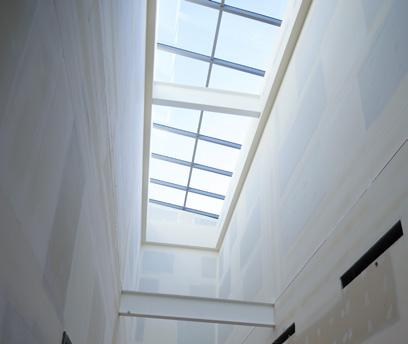
ON JULY 16TH THE RIBBON WILL BE CUT ON THE APPLIED SCIENCE PROJECT MADE UP OF THE RENOVATED STEWART BUILDING AND THE NEW, ADJACENT, 100,000-SQUARE FOOT L. S. SKAGGS APPLIED SCIENCE BUILDING.


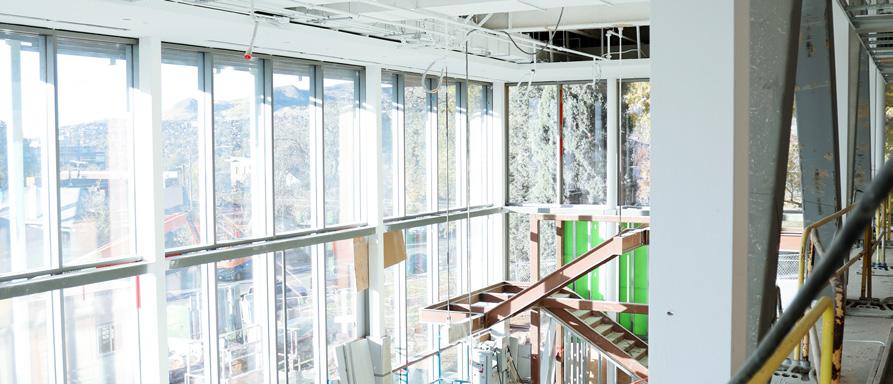
Together these connected structures will house the Physics & Astronomy and Atmospheric Sciences departments along with the Wilkes Center for Climate Science and Policy.
Located just north of Pioneer Memorial Theatre on University Street, the new, $100-million project—


complete with a new plaza abutting the historical Cottam’s Gulch—will complete what is now called the Crocker Science Complex. There are still some naming opportunities for donors available at various levels. Contact TJ McMullin in the College of Science for more information. <

by LAUREN WIGOD
UNDERGRADUATE KATE
ANDERSON HAS HER SIGHTS SET FAR, ANOTHER PLANET TO BE EXACT. AFTER A YEAR OF RESEARCH IN THE ACCESS SCHOLARS PROGRAM, SHE IS ONE STEP CLOSER TO HER DREAM OF BECOMING A NASA ASTRONAUT.
She says that ACCESS was what initially drew her to the University of Utah, and ultimately what made her decide to major in physics and chemistry. The ACCESS scholarship is designed to advance belonging in STEM by engaging first-year students with research and helping them develop a community within the college.
Like many alumni of the program, ACCESS strongly shaped Anderson’s first year experience. She contributed to a project in Assistant Professor YaoYuan Mao’s astrophysics lab. Anderson gathered data with code to locate isolated, low-mass galaxies near the Milky Way that might provide clues to the origin of our universe.
“Some of these galaxies are so isolated from the Milky Way that they have had little to no interaction with other galaxies since their creation. Because of that, they still have a lot of the properties of the very early universe. I was just trying to find the precursor to the bigger question”, explains Anderson.
This hands-on research experience through ACCESS helped Anderson earn a NASA Space Grant Consortium Scholarship, an additional boost on her path to becoming an astronaut.
Anderson’s dream of voyaging to another planet to do true astrophysics “fieldwork” is supported by a plan that has been in the works since well before she stepped foot on campus. “I decided I wanted to be an astronaut and worked backwards,” she says.
NASA astronauts either have a science or military background. Anderson thought “why not both?” This motivated her to join the Air Force ROTC in addition to her academic obligations with the hope of becoming a pilot. This way, she can command the spaceship as well as handle the science.
NASA actually posted applications for astronauts in 2024. “I was devastated that I couldn't apply [then],” she says. Though the journey ahead is long, this budding scientist and future space traveler has a lot to look forward to in her next few years at the U. Anderson is excited about starting new research projects, taking observational astronomy, and spending time with her friends, many of whom she met through ACCESS. <

THOMAS WEI-TSU TANG , BS’94, IS AN EXTRAORDINARY COMPETITOR. A TWOTIME OLYMPIAN IN ALPINE SKIING (CALGARY, 1988 AND ALBERTVILLE, 1992), HE HAS ALSO COMPETED IN A WORLD CUP AND A WORLD CHAMPIONSHIP IN SKIING.
“I am proud to be an Olympian,” says Tang. “Elite competition pushes the limits of humanity, our physical and mental capacity, our emotions and compassion for each other.” For Tang, pushing those limits has extended from the slopes to business, to family and, finally, to something else that makes this U alumnus extraordinary: his capacity to pay it forward.
by JAMES DEGOOYER
Founder and president of Apantac, Tang has elevated the company as a global leader in design and development of high-quality, costeffective image signal processing equipment. “The Apantac product line has been designed to provide the broadcast and professional audio-video industry with flexible and innovative technology solutions for video processing and signal extensions and switching,” says Tang.
Originally from Taipei, Taiwan, Tang definitely put in his hours founding his own company. “During the first three years, times were tough,” says Tang whose family of birth relocated from Taiwan to Salt Lake City when he was 13. “And when things were not going well, I dug into being an Olympian. When you train, you know the pain is transitory, and you know you’re getting stronger and something better is coming!”
At a small startup with very limited resources, Tang remembers, “I was working so hard, one day my wife said to me, ‘If you’re going to work this hard, you should work for yourself!’
This put the idea in my head that I
should start my own company. I knew that I wanted to make products for the video industry, so I quit my job in early 2008 and started working on how to realize these ideas.”
By the end of 2008, he had begun developing products in his basement. In April 2009, the company’s first product, a Multiviewer, was launched. The device allowed one user to view multiple video sources on a single screen or across multiple screens. Since then, Apantac has grown significantly, offering more than 200 products and shipping to more than 40 countries.
While a proven competitor in sports, Tang’s more collaborative side comes to the fore with his siblings, Grace Hui Tang and Bonnie Y. Tang. The three of them have invested in a permanent named space in the main atrium of the William Stewart Building, the historic part of the L. S. Skaggs Applied Science Project. <
“Elite competition pushes the limits of humanity, our physical and mental capacity, our emotions and compassion for each other.”
‘EVERY TIME I THINK ABOUT IT, I HAVE A HARD TIME SLEEPING,’
New research, led by the U’s Anil Seth and scientists from the Max Planck Institute of Astronomy have identified fast-moving stars in the star cluster Omega Centauri that provide solid evidence for a central black hole in

the cluster. With at least 8,200 solar masses, it’s the best candidate for a class of black holes astronomers have long believed to exist: intermediatemass black holes, formed in the early stages of galaxy evolution.
The discovery bolsters the case for Omega Centauri as the core region of a galaxy that was swallowed by the Milky Way billions of years ago. Stripped of its outer stars, that galaxy nucleus has remained "frozen in time" since then. <
LOOKS LIKE MAGIC.
When skateboarders launch off the lip of a vert ramp to fly into flips and spins, it appears they’re defying gravity. In fact, these athletes are exploiting the laws of physics.
Last summer vertical skateboarding legend Tony Hawk hosted the 2024 Vert Alert contest at the Jon M. Huntsman Center on the U campus where he and the world’s best vert skaters showed their stuff. The display


inspired Kevin
Davenport,

assistant lecturer professor in the Department of Physics & Astronomy, to break down the physics that allows vert skaters to huck themselves into the stratosphere. Scan here to watch the video and learn why he calls Tony Hawk an intuitive scientist! <
by MADISON SWIRTZ

2D MATERIALS ARE AS THIN AS A MATERIAL CAN POSSIBLY GET: EXACTLY ONE LAYER OF ATOMS.

Generally made from a bulk crystal— which is about one to ten thousand layers thick—then using clear adhesive tape to manually peel off layers until left with exactly one, 2D materials are manufactured, measured, and used for various quantum applications. New faculty member Nick Borys, part of the quantum revolution, is a quick study. “You can imagine really quickly we’re doing state-of-the-art science, and the very first step is we’re processing our materials with Scotch® tape. It’s pretty rudimentary.”
While this process is cheap, it wastes quite a bit of the bulk crystal material and is not very consistent or reproducible. This is why Borys’ lab is developing robotics which can exfoliate the crystals into one layer, verify which samples are 2D, and stack them into new materials. The robots still use the same tape, but they are much better for controlling
temperature, speed, forces, and overall precision. While they are currently slow, they are an important first step in developing the ability to manufacture 2D materials at a larger scale.
Eventually, they could take processing time of stacked 2D heterostructures from months or years to minutes.
A graduate from the U, Borys Ph.D., 2011 worked with John Lupton and took a faculty position at Montana State University before returning to the U as assistant professor. The specific materials Borys works with, called transition metal dichalcogenides, are 2D heterostructures consisting of one layer of transition metals (usually molybdenum or tungsten) sandwiched between two layers of chalcogens (usually sulfur or selenium). These materials can be structured to be ideal two-state systems which emit one photon with a well-defined wavelength, polarization state, and direction using a simple electrical input, which makes them much easier to integrate into electronic circuits than other single-photon sources. This is useful for quantum photonics: working
with light at the quantum scale. Transmitting information, creating quantum encryption keys, and entangling quantum computers all rely on the ability to control photon emission at the most granular level physically possible.
So, what is this new faculty member looking to do next? Lowering temperatures. Quantum computers famously need to be extremely cold to operate, thus we need to be able to measure the properties of these materials at near-zero temperatures. Borys is already in the works of collaborating with other departments in the College of Science to continue developing a nano-optical probe which can function around 4 Kelvin.
As far as returning to the U, Borys is eager to grow his own group as well as his relationships with other departments: “[Building] interdisciplinary collaborations with not only faculty in the physics department, but also faculty in chemistry, materials science, and electrical and computer engineering. So I'm really excited for that opportunity to further enhance the impact and the breadth of the work that we do.” <
Planning for NASA’s next major telescope, the Roman Space Telescope (named in honor of the famous “Mother of Hubble” Nancy Roman), is well underway, and the University of Utah’s Gail Zasowski is helping lead that endeavor. Co-chairing the Roman Observations Time Allocation Committee (ROTAC) she and the committee of 13 scientists are tasked
with constructing an observational plan that best balances the scientific goals of the astronomical community. For example, some time will be spent studying black holes and stellar explosions dating back to the early Universe, while other observations will focus closer to home, on stars and planets in our own Milky Way and even asteroids in our Solar System.
“Our committee was deliberately chosen to span a wide range of science expertise,” Zasowski explains. “It’s our job to evaluate from a scientific perspective how to
maximize the observational output of the telescope. Is there somewhere everybody wants to look, where an observation could kill two birds with one stone? Given other telescope missions around the world, where can Roman have the largest unique impact?”
The Roman telescope is scheduled to be launched in October of next year, to journey around the Sun for at least five years and provide the astronomical community with data to study for many more years to follow. <
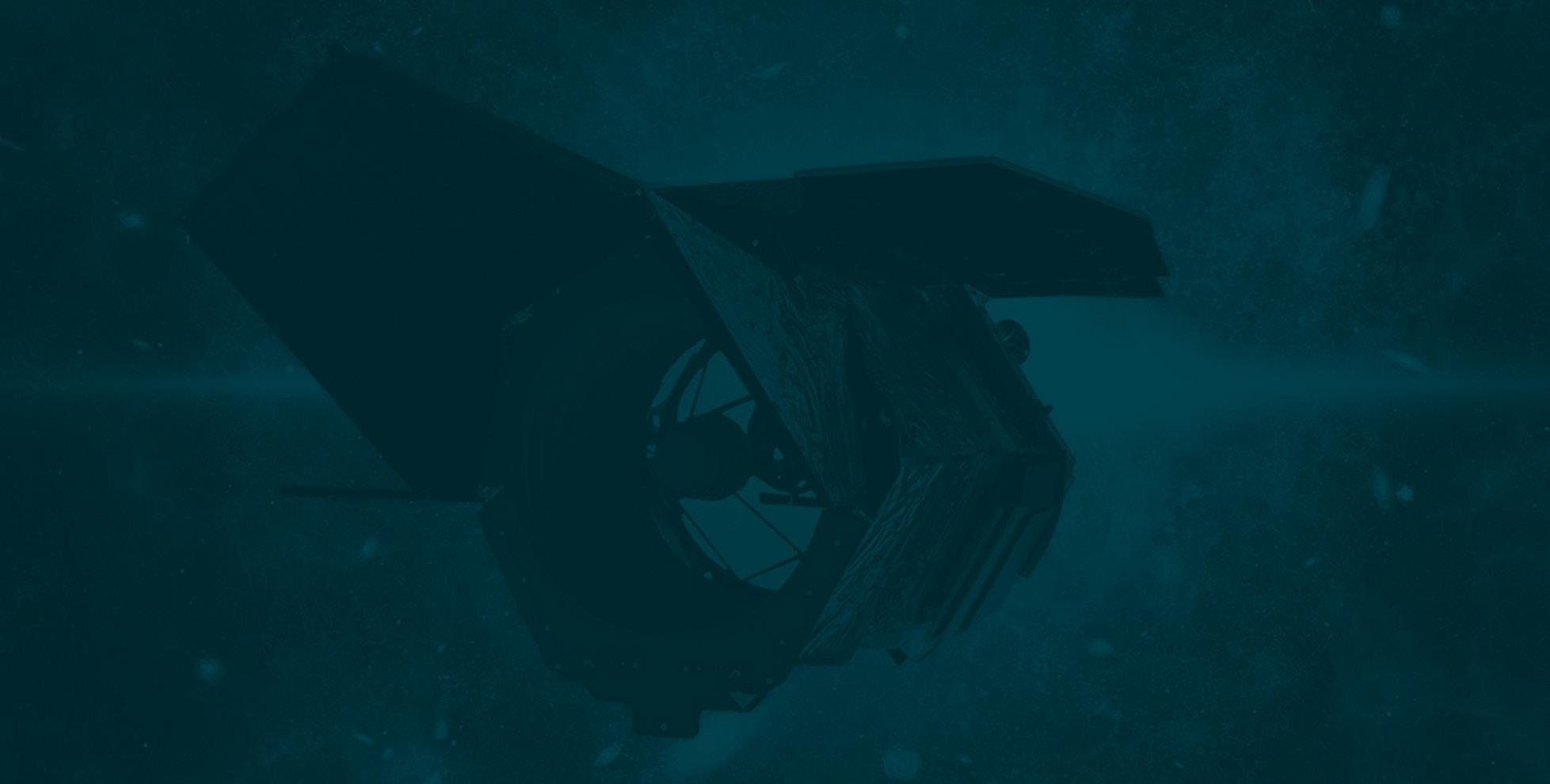
The prospect of diving into the unknown is an exciting one. Though, as the mantra in scientific research goes: “More data are needed.” A particular issue with ultra-high energy cosmic rays, or (UHECRs), however, is their comically low appearance rate—just one detection
The increased operational space would enable a faster rate of data collection—allowing the Cosmic Ray Research program to fine-tune its model and prediction. Additionally, it could offer insights into the existence of particles with greater amounts of energy than those previously recorded. The current record is the “Oh My God” particle, roughly 3.2 * 10e 20 eV, which U researchers observed on Oct. 15, 1991.
“You’re satisfying human curiosity and man’s desire to understand and man’s desire to explore,” Cosmic Ray Physics program manager John N. Matthews says. “You’re solving problems that you didn’t expect. You’re understanding the cosmos, you’re understanding the world—the universe we live in. And maybe along the way, you create an invention that has a broader application [for our society].” <



ON FEBRUARY 18, NOBEL LAUREATE IN PHYSICS STEVEN CHU WAS THE FEATURED SPEAKER AT FRONTIERS OF SCIENCE, THE U’S LONGEST RUNNING LECTURE SERIES.
Approximately 500 filled the Canyons atrium at the Natural History Museum of Utah to hear Chu address “My Random Walk through Science.”
“What impressed me most,” says Department Chair Carsten Rott of the event, “is that he continues to reinvent himself, tackling new challenges in different fields, ranging from laser cooling, molecular and cellular physiology, to battery and renewable energy research.”
Featuring a back-lighted, three-story curio of museum artifacts, the setting was an apt one as Chu talked about his family of birth, the circuitous path through scientific inquiry—including many failures along the way that brokered new directions—including work to mitigate global warming. He ended his lecture by recounting his time not only at Stanford University and at national labs but, finally, as Secretary of Energy during the Obama administration. “I'm hoping that a little support in science and science technology grows.” <

WITH THE DISCOVERY OF THE ELECTRON IN 1897, A NEW ERA OF SUBATOMIC PARTICLES EMERGED AND WAS ORGANIZED INTO A THEORY.
Eventually known as the Standard Model, it impressively, and powerfully, describes the properties and behavior of the matter surrounding us in a single, albeit hefty, mathematical equation. But today, despite its precision, the Standard Model is only a small sliver of reality, leaving a lot of unexplained mysteries.
One of those mysteries is the identity of so-called dark matter, a critical component of the universe that has been observed only through its gravitational interactions. It’s known that dark matter played a key role in the formation of structures such as galaxies, but we have yet to understand what, exactly, it is. Some of the leading ideas are that dark matter may be made up of one or more new types of particles or that it could be a collection of black holes.
This interrogation of the Standard Model by scientists from around the world is escalating, including at the U which is rising in prominence as an institution with expertise in dark matter phenomenology.
A nexus for this interrogation is the
“No Stone Unturned” conference, the second in a series which took place from March 10-14 at the U and fielded many of its participants, including Gustavo Marques-Tavares, Zhengkeng Kevin Zhang, Yue Zhao, and Pearl Sandick.
“The gathering cast a wide net,” says Sandick who herself investigates various phenomena related to the identity of dark matter, such as the gamma-ray signature of dark matter annihilations in our galaxy, or possible effects of dark matter on the first stars to form in the Universe.
Topics at the conference, she recounts, “included search strategies for terrestrial and space-based detectors, and new directions for theoretical, experimental, and observational approaches.”
Fifty-four participants, from Israel to France and from a range of universities to world-renowned national labs like the Fermi National Accelerator Laboratory (Fermilab) assembled to discuss various aspects of “new physics” beyond the Standard Model. On Tuesday, for example, Hai-Bo Yu of UC Riverside addressed “Halo Gravothermal Collapse and its Astrophysical Signals.” This talk was immediately followed by Fermilab’s Asher Berlin whose reinterpretations of Cavendish tests of Coulomb's Law—first performed in the late 18th
century—considered alternative detection techniques sensitive to a terrestrial population of slowlymoving dark matter particles.
How critical is it that we better understand dark matter which astrophysical observations imply make up five-sixths of the total matter in the Universe? “It’s what holds the Universe together,” according to Marcela Carena, executive director of the Perimeter Institute for Theoretical Physics and a conference participant. “But we have no clue what it’s made of, or why it is there at all.”
“We hope this workshop helped to spread good ideas and spark new directions,” Sandick says. “It’s relatively rare to bring together so many scientists approaching a common topic from such different perspectives” as was done at the gathering.
Department Chair Carsten Rott agrees: "What the Utah group has done is very impressive. The search for dark matter has been a challenge to the community for many years, and their work is playing an important role in ensuring that we leave no stone unturned." <

In March, Pearl Sandick , professor in the Department of Physics & Astronomy since 2011, was elevated in the College of Science from associate dean for faculty and research to interim dean. She replaces Peter Trapa.
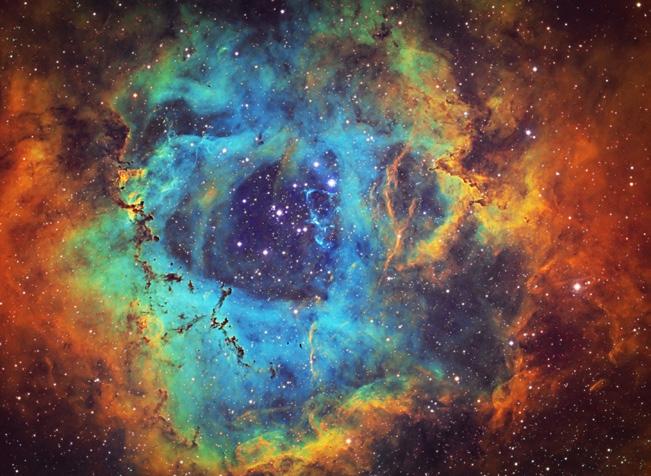


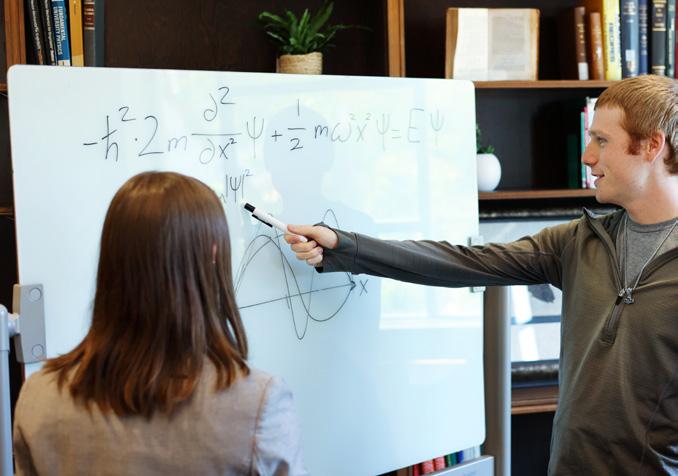
Thank you to all of our alumni and friends who contribute to the Department of Physics & Astronomy. Your support enables us to provide exceptional education, conduct groundbreaking research, and prepare the next generation of leaders in our chosen discipline.

Other areas of particular need include: GRADUATE FELLOWSHIP SUPPORT GENERAL FUND

For more information about giving to Physics & Astronomy, contact:

TJ McMullin Principal Director,

If you’d like to support our efforts, please consider contributing to the APPLIED SCIENCE PROJECT, which will serve as the future home of the department.
We are grateful for your investment in our students, faculty, and staff. We’d love to hear from you or have you stop by campus for a visit. You are always welcome here at the University of Utah!